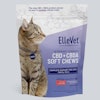
Frequently, the word “humanization” is used with pet food, yet it is not always clear what it means. More important to understand is how humanization affects the business of pet food. In markets where pet food penetration is still developing, such as Latin America, understanding humanization is essential to understanding the future trends and expected growth rates of the industry.
New ways for owners to meet pets’ needs
In the past five years, humanization has led, more than anything else, to a wide assortment of pet food products generated from new consumption occasions or conditions. These signify that pet owners, influenced by the humanization trend, are discovering new ways to satisfy their pets’ needs. For example, sedentary, spayed, sick or extremely active pets require different nutrition. Therefore, humanization help producers acknowledge such needs and how they may satisfy them.
On the production side, humanization means that local (and global) producers are developing products that satisfy fresher trends and newer consumer needs. As humanization permeates among pet owners, so does the growth in variety of products available on the market.
However, humanization does not necessarily mean more sales of pet food. It means more specialization and more complete satisfaction of needs. Thus, the volume growth of pet food in Latin America is likely not driven by humanization but by other factors, such as price.
Opportunities for pet food entrepreneurs
As more niche consumer segments arise from humanization, so do the opportunities for pet food entrepreneurship. Several pet food startups in Brazil, Argentina, Chile and Mexico are taking advantage of humanization trends and introducing new product developments—for example, wine and beer for dogs, vegan food, tamales and hundreds of treats for different consumption occasions or conditions.
For large companies, humanization is encouraging them to expand their current brands by introducing a wide variety of natural antioxidants, vegetables, alternative grains, tubers and other natural ingredients. In these cases, the expansion of consumption conditions is more associated with the quality of the ingredients than with experimental formulations such as the ones of startups.
What is the future of pet food humanization?
The essential variable to forecast future humanization trends is human demographic dynamics. The countries with a vast base of young consumers will likely shape the future of the pet food industry. In this regard, Latin America has a demographic bonus that will lead to products that match the needs and demands of these consumers, such as natural ingredients, a decrease in the carbon footprint and socially responsible companies.
















